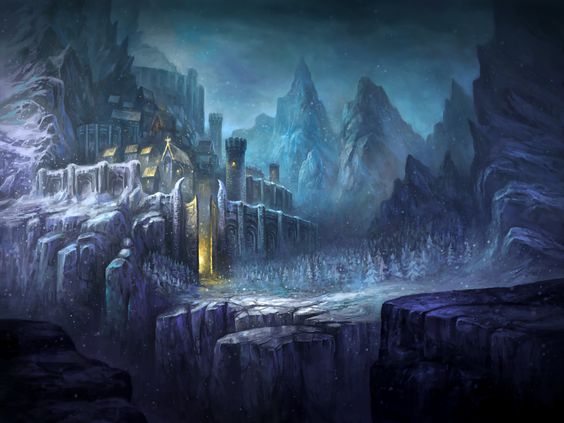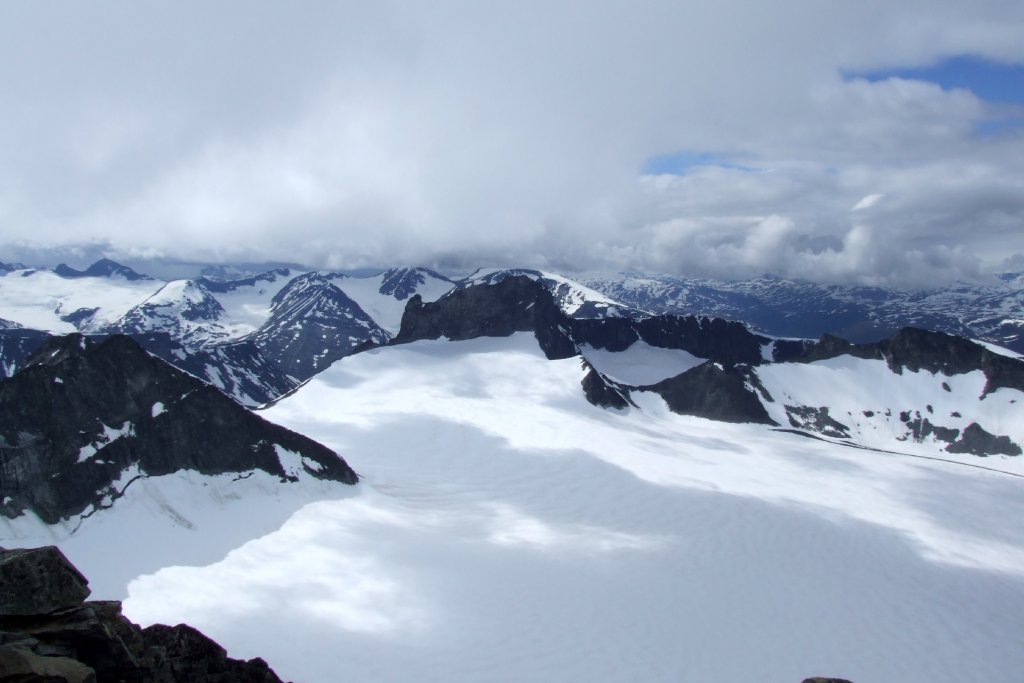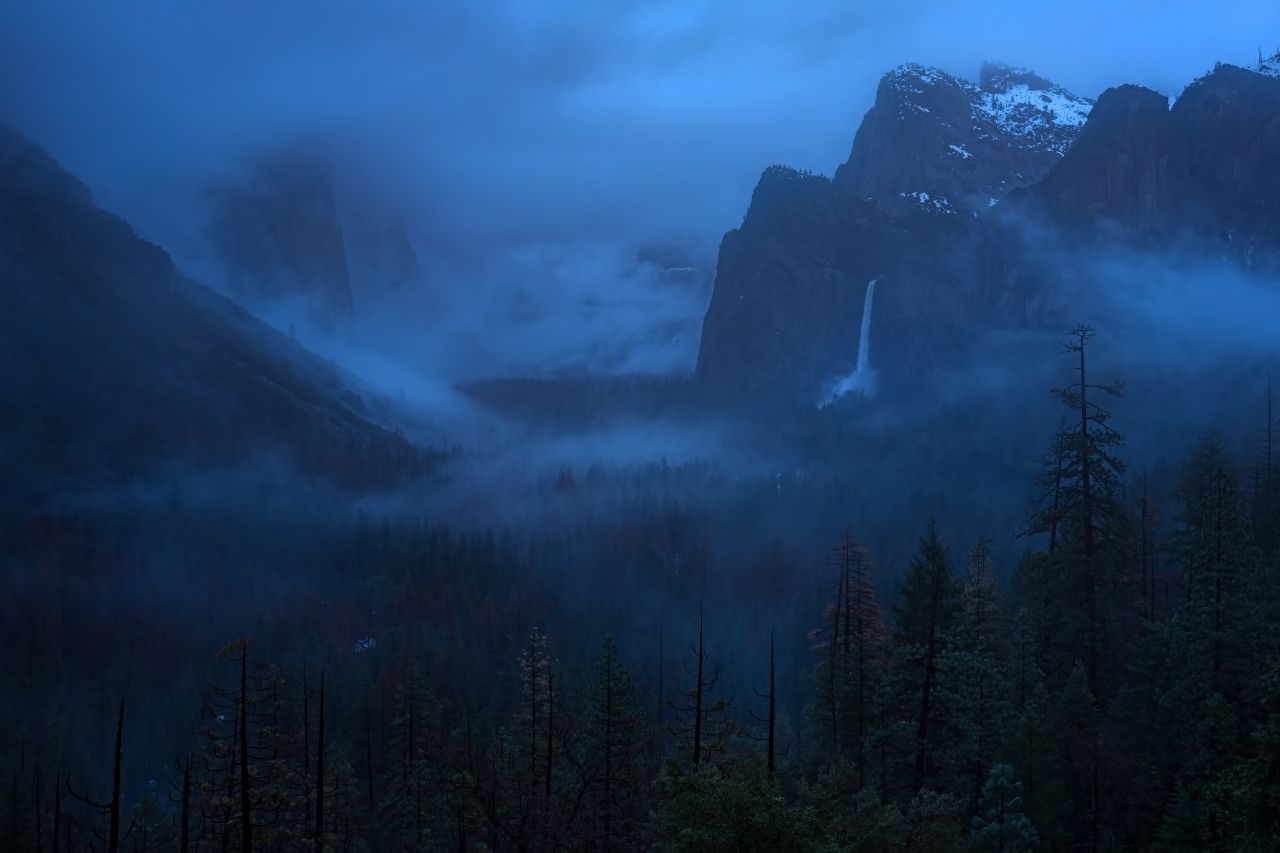Jotunheim is one of the nine worlds that exist in Norse mythology. Translated into English, it means “world of the giants,” This land is a rugged environment of extensive, foreboding forests and towering mountains.
Background and History
Also known as Jötunheimr in Norse cosmology and Jǫtunheimr in Old Norse, the land is the home of the Jötnar, characters from Norse mythology, often translated as “giants.” Jotunheim is also called Utgard, or Útgarðr in Old Norse.
Popular opinion often claims that Norse mythology cites opposites of geographical regions and psychological states as “Innangarðr“ or “Útgarðr. “
“Innangarðr” means “within a fence,” and “Útgarðr“ means “outside a fence.” The idea is that somewhere “Innangard“ is controlled, peaceful and serene, while something “Utgard” is hostile, wild, and anarchic.
Renowned Old Norse specialist Doctor Jackson Crawford from the University of Colorado absolutely refutes these theories (please watch this YouTube video to discover what he thinks of the claims).
To a certain extent, the Utgard idea does reflect the environment you would expect to find in Jotunheim – a desolate and wild area of mountains and dense forests inhabited by giants. When you look at it that way, it is “Utgard,” indeed.
Who is The King of Jotunheim?
In Norse mythology, the king of Jotunheim is a Jötnar called Skrýmir, also known as Útgarðaloki.
As we’ve seen previously, “Útgarða” means something like outer territories, so the translation of “Útgarðaloki” would be something like “Loki of the Outlands.” This combination of names also distinguishes him from Thor’s brother, Loki.
Thor nearly kills a sleeping Skrýmir when they encounter each other in a forest in Jotunheim. Thor attempts to land three hammer blows on the giant king but fails.
Skrýmir later reveals that had Thor made contact, he would have undoubtedly slayed him and shows Thor that his three hammer blows each created a hammer-shaped valley!
One of Saturn’s moons also bears his name.

Is Asgard and Jotunheim the Same?
Asgard and Jotunheim are certainly not the same. They are divided by the river Ífingr or Ifing. This river is difficult to cross as it is very fast-flowing and never freezes.
Ifing the river is called, which divides the earth between the sons of giants and the gods; freely it will flow through all time, ice never forms on the river.
The Poetic Edda – Page 42
They are two of the nine worlds of Norse mythology and are held by the roots and branches of the World Tree Yggdrasil. Asgard is the home of gods and goddesses, while Jotunheim is the realm of the giants.
Is Loki from Jotunheim?
According to most sources, yes, he is. They report that his father is the jötunn Fárbauti (or “Cruel Striker”). His mother was Laufey (or Nal), who various articles suggest could be a giantess too.
It may explain why Loki was keen to explore Jotunheim clandestinely when he convinced Freyja to lend him her falcon disguise. However, his average stature may also indicate his parents were from Asgard or Midgard.

His parents abandoned him as they thought he was too small and weak to be a proper giant. An invading Asgardian army found him but believed him dead until Odin realized he was still alive and took him to Asgard.
Odin raised him as a prince, surmising that Loki, when an adult, could unite Asgard and Jotunheim and create peace and harmony between the two warring worlds.
Why Does Loki Destroy Jotunheim?
After finding out about how his parents abandoned him, Loki always hated Jotunheim. After being raised as an Asgardian prince, he also considered the realm of the giants beneath him and contemptuous.
He eventually decides that destroying Jotunheim could win him the approval he desperately craves from his “father,” Odin.
In Loki’s mind, the destruction would prove to Odin that he, not Thor, was the most worthy of ruling Asgard after the Allfather’s passing.
Why Does Odin Want to Go to Jotunheim?
The Æsir, Odin, is obsessed with acquiring all the wisdom of the nine worlds and hears stories about a well called Mímisbrunnr situated in Jotunheim underneath the second root of the world tree Yggdrasil.
The well is said to be the source of wisdom of the jötunn Mímir who guards it, and Odin is desperate to retrieve it, so he journeys to the giants’ realm to bring it home.
Mímir is an ancient being famous throughout the nine worlds for his wisdom. When Odin arrives at the well and requests to drink from it, Mímir tells him that he will only allow Odin to do so if he removes one of his eyes and gives it to Mímir.
Odin agrees, takes out an eye, and hands it over. Mímir places the eye in Mímisbrunnr after Odin leaves.
What is Jotunheim in Thor?
The Thor movie of 2011 accurately described Jotunheim as a land of giants. However, according to legend, it differs from Norse mythology in that Laufey, the king of Jotunheim, is actually Loki’s mother.
In the film, Odin described the frost giants as coming from “a realm of cold and darkness,” which ties in with what we know about Jotunheim. That said, the stature of the frost giants in the movie isn’t that of a giant at all. They are just slightly taller than human beings.
In a great battle at Tønsberg, Norway, Asgard’s armies drive the frost giants back into their own world and take the source of their power, the magic casket, back to Asgard. As Thor is about to be proclaimed king, the Jotun break into the Asgard weapons vault and try to steal the casket back, only for the “Destroyer,” a giant robotic guard, to kill them all before they can escape.
Loki beguiles Thor into believing an attack on Jotunheim is the only way to prevent the frost giants from returning to enter the weapons vault again. He recruits his friends Fandral, Hogun, Volstagg, and the female warrior Sif to help him in his quest.
To reach Jotunheim, they must use the Bifrost transportation system guarded by the formidable Heimdall. Heimdall is troubled by how the frost giants had somehow slipped past him into Asgard – an unprecedented event. Thor plays on this, and Heimdall allows them to use the Bifrost to reach Jotunheim.
Jotunheim in Thor (Marvel) Vs. Norse Mythology
Here is another departure from traditional Norse mythology. In the movie, Thor and his companions travel through a wormhole to reach Jotunheim, when in legend, the river Ífingr is all that divides the two lands.
The movie depicts Jotunheim as a rocky, dark, and frozen desolation. From the moment the companions arrive, there is a sense of evil and foreboding about the place as great chunks of rock and masonry fall from decaying ruins all around them. The absence of the magic casket seems to be causing Jotunheim to fall apart.
Thor finds Laufey, and a great battle ensues. However, the companions are outnumbered and forced to retreat to their landing point, where they call Heimdall to reopen the Bifrost so they can return home.
When the Jotun are about to launch their final attack, Odin appears out of the Bifrost and holds the frost giants off until the Asgardians can reach the Bifrost and return to their realm. In the confrontation between Odin and Laufey, the truce between them is broken.
Later in the movie, Loki returns to Jotunheim after Odin has banished Thor banished to Earth. Odin has also altered Thor’s hammer, Mjölnir, so Thor no longer has control over it.
After an incident in the battle in Jotenheim, Loki now knows he is Laufey’s son and proposes to the frost giant king that he will smuggle him into Asgard to retrieve the magic casket and kill Odin in his sleep. Laufey now realizes that Loki was how the frost giants managed to enter Asgard undetected the first time.
Loki mentions that with the return of the casket, Jotunheim can be restored to its former glory, indicating that the land is indeed in a state of decay due to the casket’s absence.
There is a slight hint of sarcasm in Loki’s voice and manner when he is saying this, inferring that even a rejuvenated Jotenheim will still be a rather grim and desolate place.
Is Jotunheim a Real Place?
There is a place in the municipality of Lom in southern Norway called Jotunheimen. It is a region of about 1,400 square miles (3,500 square kilometers) and forms part of the Scandinavian Mountains.
The range includes the 8,100 feet high Galdhøpiggen, the highest point in Norway. Indeed, the 29 highest mountains in the country are all in the Jotunheimen mountains. These mountains run along the border between the counties of Vestland and Innlandet.

The Jotunheimen National Park, established in 1980, lies within Jotunheimen and has an area of 444 square miles (1,151 square kilometers). The national park also contains the Hurrungane mountain range, which features some of the sharpest peaks in Jotunheimen.
Jotunheimen has 250 peaks of more than 6,200 feet (1,900 meters), with two of the highest in northern Europe, Glittertind, and the previously-mentioned Galdhøpiggen.

